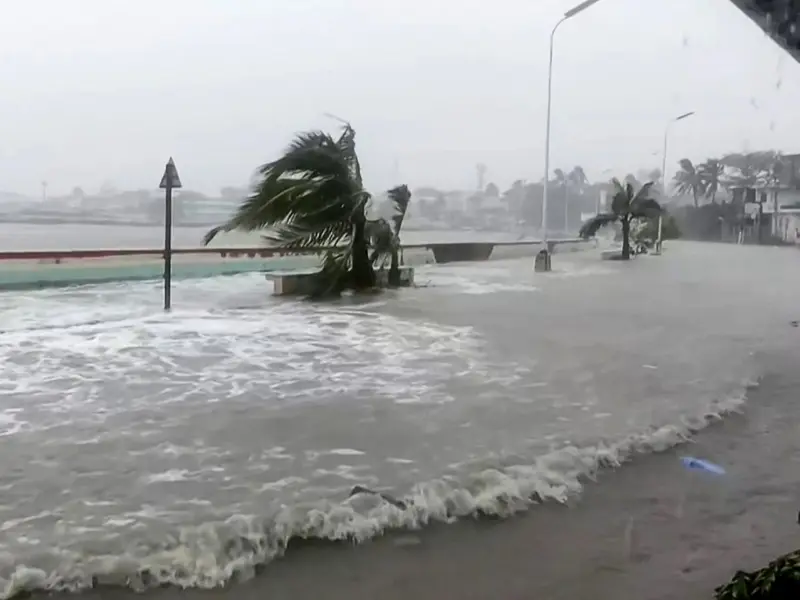The Philippines is bracing for the impact of Super Typhoon Fung-wong, with authorities evacuating nearly 917,000 people ahead of the storm’s expected late-night landfall on the east coast. The super typhoon, moving westward with winds of 185 km/h near its center and gusts up to 230 km/h, is forecast to affect large portions of the archipelago, including the capital Manila.
Schools and government offices across Luzon, the country’s main island, have been closed, and nearly 300 flights have been canceled as precautionary measures. Small islands like Catanduanes, directly in the storm’s path, have already begun to experience severe wind and rain, with storm surges inundating streets.
Civil Defence Deputy Administrator Rafaelito Alejandro reported that floodwaters were rising in coastal towns and that authorities had preemptively evacuated residents to safer locations. In Catanduanes’ Virac town, locals described waves crashing over seawalls, heavy rain, and howling winds. Verified footage shows streets and even church entrances submerged under floodwaters.
Southern Luzon’s Bicol region has also experienced flooding, particularly in the Albay province, where towns like Guinobatan saw streets turn into torrents. Meteorologists warn that Fung-wong could bring over 200 millimeters (eight inches) of rain to many areas, exacerbating existing flood risks.
Residents in vulnerable areas have taken urgent precautions. In Catanduanes, locals tied down roofs with ropes and weighted them to prevent wind damage, while some sought refuge in churches as coastal waves surged.
This comes just days after Typhoon Kalmaegi, the deadliest storm of 2025 so far, claimed at least 224 lives, left 109 missing, and caused widespread destruction in Cebu and Negros islands. Rescue operations from Kalmaegi have been temporarily suspended due to Fung-wong’s approach, as officials prioritize the safety of emergency personnel.
Experts warn that climate change is intensifying storms, with warmer oceans fueling stronger winds and heavier rainfall, highlighting the urgent need for preparedness in typhoon-prone regions like the Philippines.

